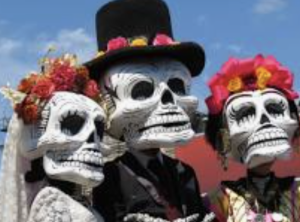The National Gallery of Art, located in Washington, D.C. is an art museum that preserves, collects, exhibits, and studies Western art, from the Middle Ages to the present, and is free to the public. Explore and learn about some of the most famous works from the National Gallery’s collection, make your own art, and share it with friends!
Spark your thinking!
1. Set up your early enrichment mini spark recording page:#71: All About Art!
2. Read this paragraph about the National Gallery of Art and add 3 details to your recording page.
The museum was founded in 1937 when the financier and philanthropist, Andrew W. Mellon, donated to the government a collection of paintings by European masters and a large sum of money to construct the gallery’s building, which was created by the architect John Russell Pope and opened in 1941.The National Gallery now holds a very large collection of European and American paintings, sculpture, decorative arts, and graphic works from the 12th to the 20th century. The museum has especially amazing holdings of works by Italian Renaissance painters, as well as by Dutch and Spanish Baroque and French Rococo artists.
3. Check out the famous works of art below that are located in the National Gallery of Art! Click on the name of the art and you will go to an information page. If you click on the words “visual description” there is more information about the art. Choose your favorite one and write about what you like on your recording page.

Georgia O’Keeffe Shell No.1


Louise Bourgeois Spider
5. OPTIONAL: You can discover the world of art in a fun and easy way. Explore and learn about some of the most famous works from the National Gallery’s collection, make your own art, and share it with friends at Paint -n- Play. Take a screenshot of your creation and add it to your recording page.
6. Share your Early Enrichment mini spark recording page with your teacher/EY coordinator.
Check out the Paint and Play mini spark where you can create your own art inspired by one of the pieces from the National Gallery of Art.









 Halloween evolved from the ancient Celtic holiday of Samhain. Over the centuries, Halloween transitioned from a pagan ritual to a day of parties, costumes, jack-o-lanterns and trick-or-treating for kids and adults.
Halloween evolved from the ancient Celtic holiday of Samhain. Over the centuries, Halloween transitioned from a pagan ritual to a day of parties, costumes, jack-o-lanterns and trick-or-treating for kids and adults.

 Constitution Day, which is celebrated every year on September 17th, commemorates the formation and signing of the U.S. Constitution on September 17, 1787.
Constitution Day, which is celebrated every year on September 17th, commemorates the formation and signing of the U.S. Constitution on September 17, 1787. 

 Ancient cities were often built around a fortress on top of a hill. When a city spread to the area below, the high part came to be called the acropolis, which means “city at the top” in Greek. The best-known acropolis is in Athens, Greece. The Acropolis of Athens contains the remains of several ancient buildings of great architectural and historical significance, the most famous being the Parthenon
Ancient cities were often built around a fortress on top of a hill. When a city spread to the area below, the high part came to be called the acropolis, which means “city at the top” in Greek. The best-known acropolis is in Athens, Greece. The Acropolis of Athens contains the remains of several ancient buildings of great architectural and historical significance, the most famous being the Parthenon

 Take the excitement of history and mix it with your imagination to create ancient adventures! You can pick any person, place or event from history to inspire your mini-saga, a story told in just 100 words that must have a beginning, a middle & an ending.
Take the excitement of history and mix it with your imagination to create ancient adventures! You can pick any person, place or event from history to inspire your mini-saga, a story told in just 100 words that must have a beginning, a middle & an ending.